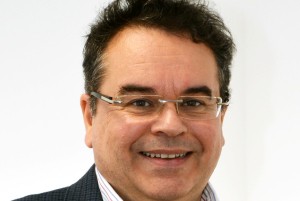In Gartner’s hype cycle, there is an inevitable time of disillusionment that follows the initial excitement of a new technology. At the SDN World Congress this feels different: although we have probably passed the peak of inflated expectations, there is less a trough of disillusionment,rather a set of major impediments that need to be cleared away in order to achieve the nirvana of SDN/NFV.
Most actors can see what needs to be done and are steadfastly supporting the initial objectives but my impression is that breaking through to achieve the goals of network virtualisation is like pushing through the famous glass ceiling. Though not created by prejudice, as in the traditional definition of glass ceiling, the barriers are real and there are many, says Pravin Mirchandani, CMO, OneAccess Networks.
Glass Ceiling 1: Complexity
One of the goals of software-defined networking is to reduce dependence on an army of network experts, who are difficult to recruit and retain, expensive to hire and prone to error. What’s clear is that what they do is indeed complex; and converting their expertise and processes into automated software processes and APIs is equally if not more complex, as there is a distinct lack of established practices and field-proven code to draw upon.
Many of the speakers at SDN World Congress mentioned the issue of complexity and this was a constant theme in the corridor discussions. Laurent Herr, VP of OSS at Orange Business Services stated that Orange estimated it would take 20,000 man-days to convert their tens of IT systems to achieve virtualisation.
Glass Ceiling 2: Culture
Another common theme was the issue of culture. Telcos have been organised to deliver the ‘procure-design-integrate-deploy’ cycle for new services and have a well-established set of linear processes and organisational silos to achieve it.
Introducing virtualised services however requires a DevOps culture based on agility, fast failing (anathema to the internal cultures of Telcos) and rapid assembly of multi-skilled teams (especially collaboration between network and IT experts) to deliver new outcomes, frequently, fast and reliably. Achieving a DevOps culture was one of the most frequently cited challenges by the Telco speakers at the Congress. Another common word they used was transformation.
Glass Ceiling 3: Lack of expertise
It’s difficult to estimate the number of engineers that really understand the principles and practices of virtualisation but they probably number in the low hundreds across the globe. Given the ability of the vendors to pay better salaries, it’s a safe bet that the majority work for them rather than for the Telcos.
Growing this number is difficult as it requires combining IT, programming and network skills. Creating collaborative teams helps but finding or training people to achieve mastery of the different skills is a challenge for the whole industry. This was more of a corridor conversation rather than openly cited by the speakers but it is a glass ceiling nevertheless.
Glass Ceiling 4: Lack of tools
One of the dichotomies of the statements made by the speakers at the Congress was the professed maturity of the available tools (by the vendors) and the lack or immaturity of the same (by the Telcos). Clearly there is a disconnect between the sets of statements but the stark reality is that the tools available are not adapted to the complexity of enabling the delivery and operations of virtualised infrastructure and services.
Virtualisation is complex as already discussed and the tools are not yet up to the job of deciphering this complexity and providing the troubleshooting and service assurance required. Several speakers made reference to the need to achieve SLAs, the vendors in promoting their tools, the Telcos in achieving increased customer interest and traction for next-generation virtualised services.
Glass Ceiling 5: Cost of white-box CPEs
This was a theme of my own presentation on ‘Why Operators are Turning Away from Pure Virtualisation’ but was also called out explicitly by Shawn Hakl of Verizon in an opening keynote. He wanted to see white-box CPE at purchase prices of $2-300 to his organisation and showed the dramatic price evolution downwards in recent months, though still far from the levels he wants to achieve.
The reality is that a white-box CPE is expensive to build – there is only one vendor – Intel – for the CPU and hence lack of competition, mainstream VNFs are heavy in terms of their compute requirements (several speakers made reference to this) and the combined price of CPU plus required memory and storage precludes achieving Verizon’s cost goals at this stage. Nevertheless, Shawn’s figures are not plucked out of the air; this is roughly what Verizon pays for their entry-level pCPEs today.
Glass Ceiling 6: Lack of innovation
Swisscom, Telia and Proximus made a joint presentation at the Congress stating that they needed innovative new services and that finding them was not something they could achieve themselves or from their established vendors: they were appealing to start-ups or scale-ups to deliver them and were organising a competition to achieve this.
Verizon in the US has also recently introduced an Innovation Program targeted at mid-stage innovators and start-ups and an associated contest to achieve the same. The underlying issue is that virtualisation is mainly focused on operations benefits (service agility, time-to-market, opex savings) rather than increasing ARPU at customers with new innovative services. Enabling service innovation is yet another glass ceiling to push through.
In summary, I don’t sense any great disillusionment as the hype surrounding virtualisation inevitably diminishes, rather a pragmatic identification of major issues that still need to be addressed, albeit with few practical solutions to date. The journey to virtualisation still excites the industry but there remain a considerable number of glass ceilings to push through along the way.
The author of this blog is Pravin Mirchandani, CMO, OneAccess Networks.
Comment on this article below or via Twitter: @ VanillaPlus OR @jcvplus






